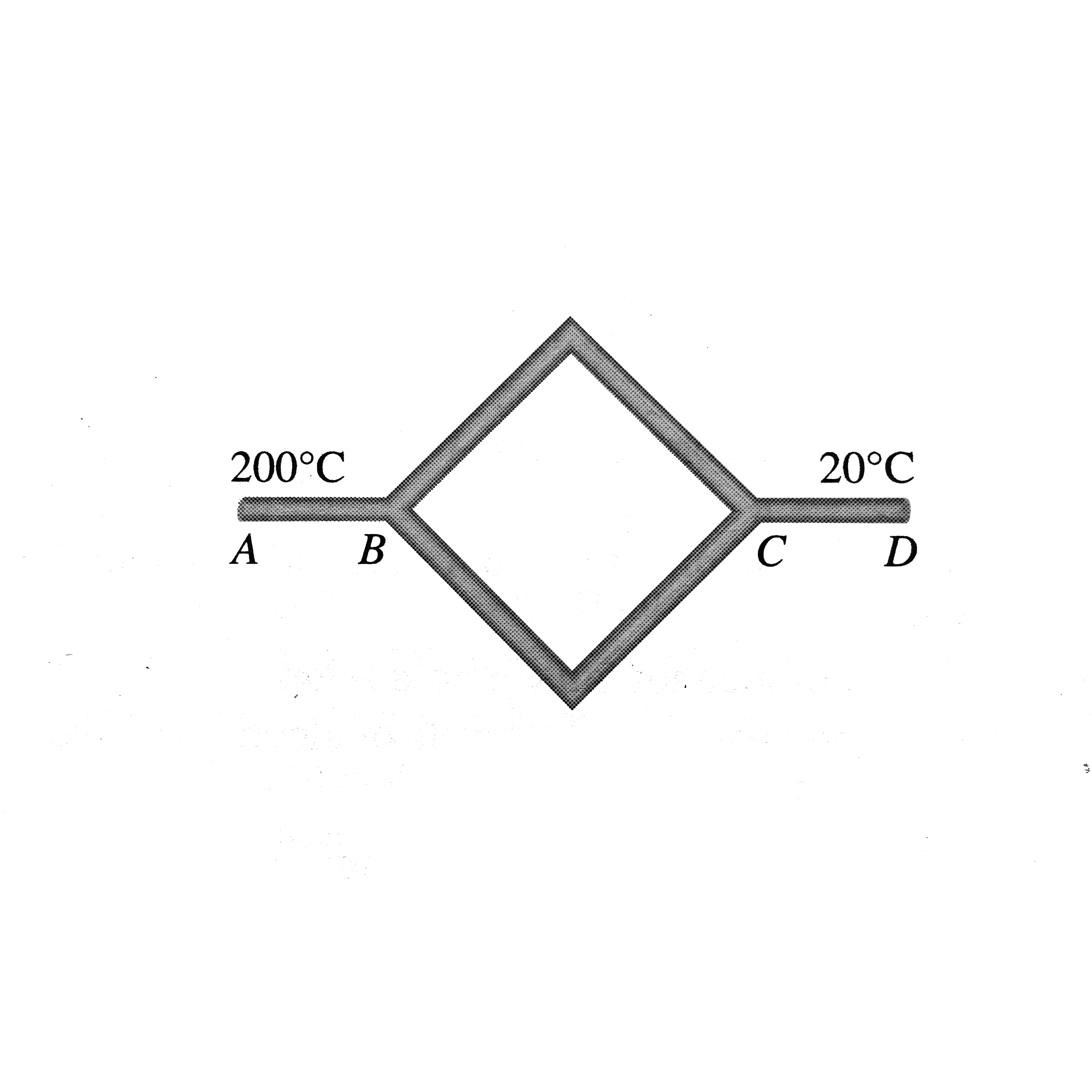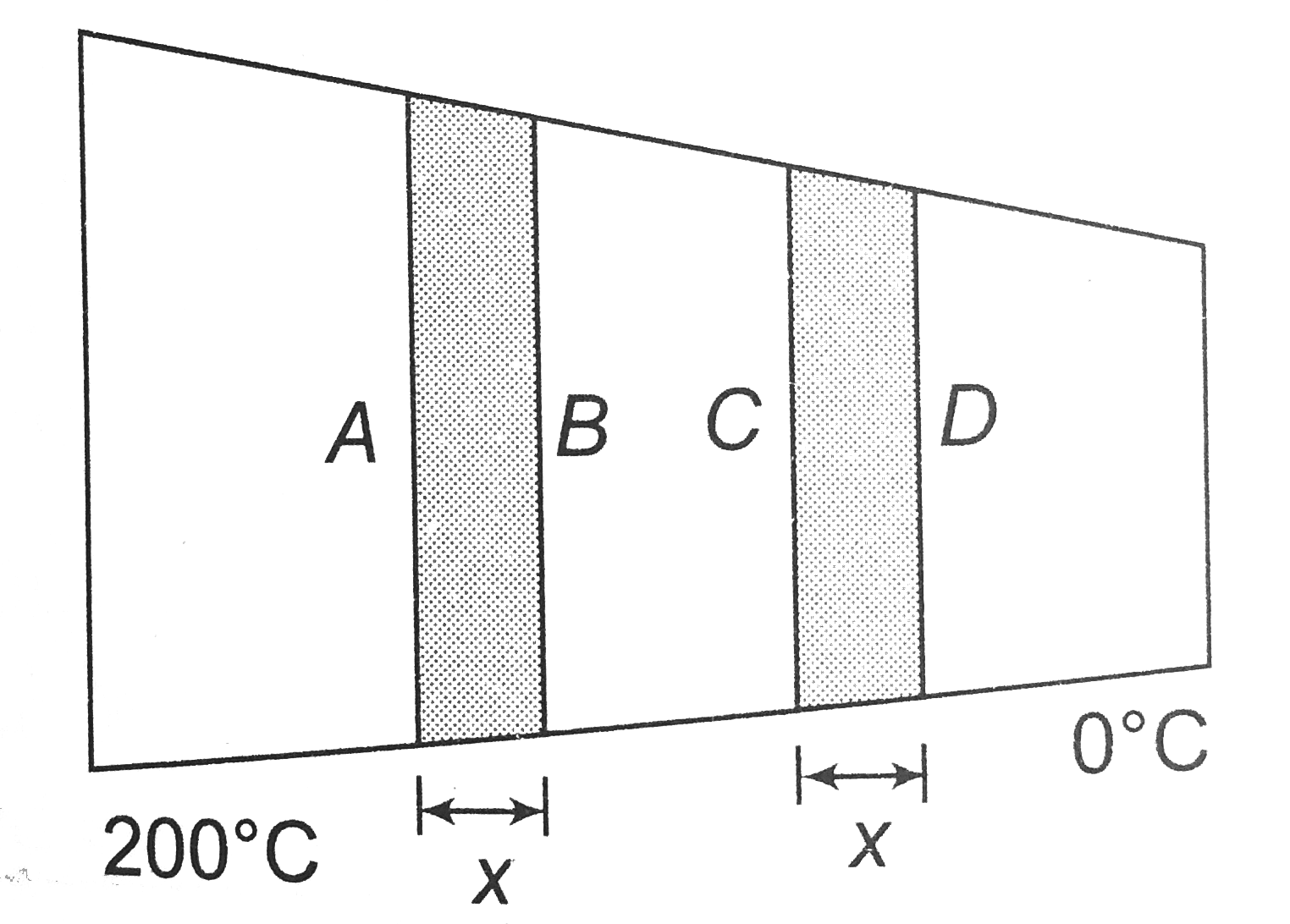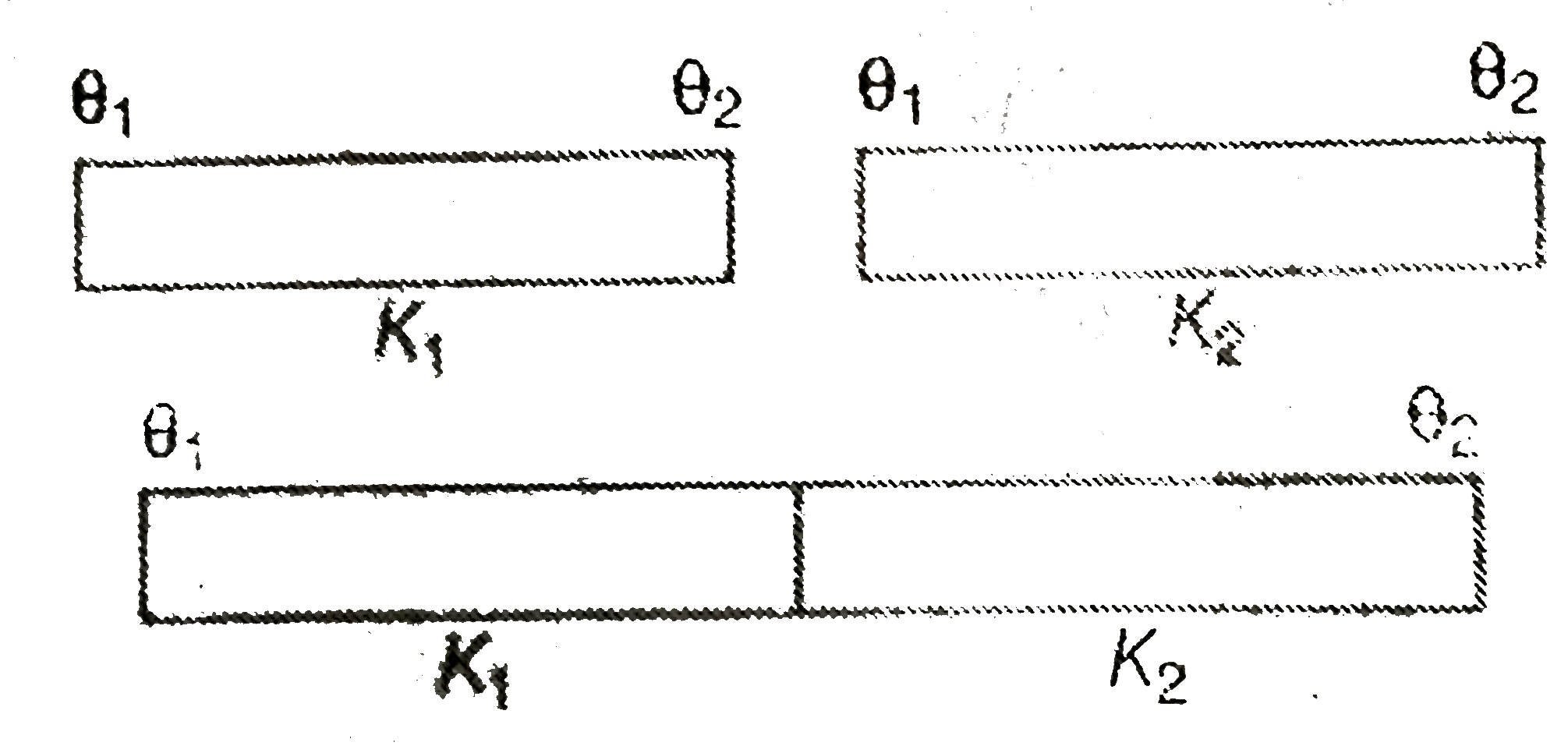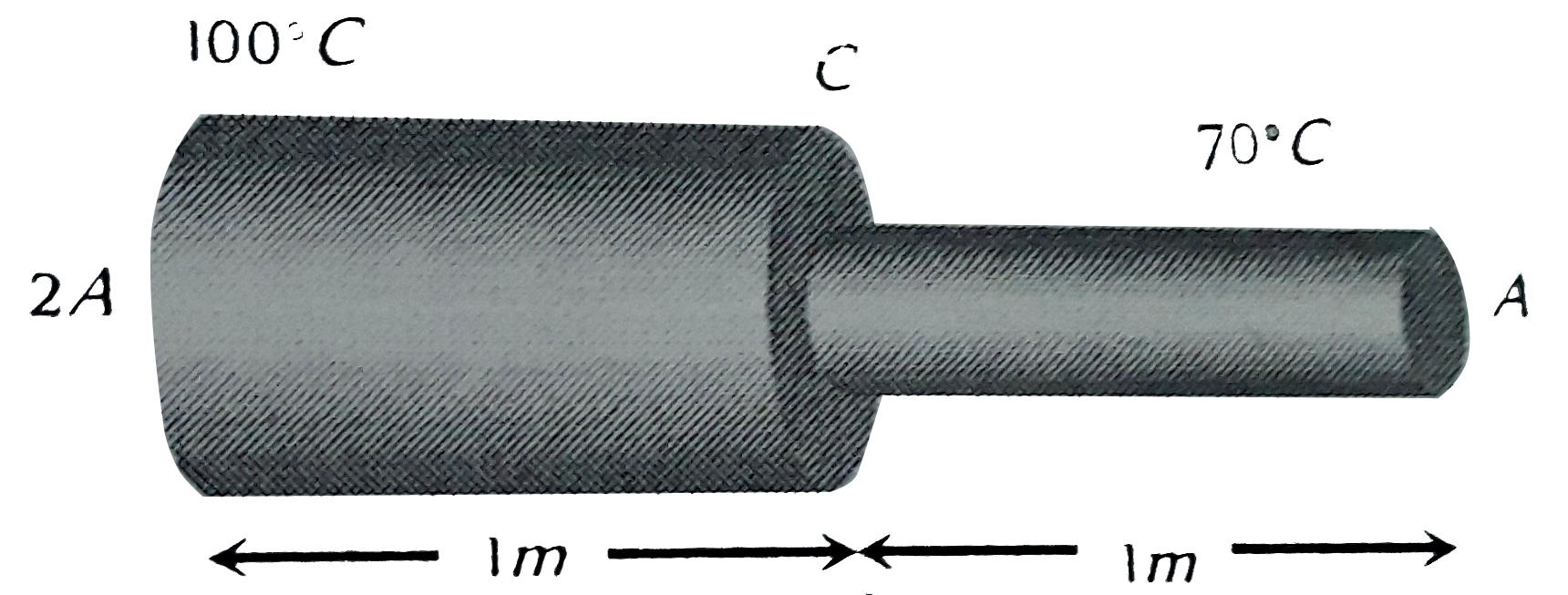The two ends of a metal rod are maintained at temperature 100∘C and 110∘C. The rate of heat flow in the rod is found to be 4.0J/s. If the ends are maintained at temperature s 200∘C and 210∘C. The rate of heat flow will be
44 Js−1
16.8 Js−1
8 Js−1
4 Js−1
The correct Answer is:D
To solve the problem, we will use the principle of heat conduction, which states that the rate of heat flow (Q/t) through a material is directly proportional to the temperature difference (ΔT) across the material.
1. Identify the Temperature Differences:
- For the first scenario, the temperatures are 100∘C and 110∘C.
- The temperature difference (ΔT1) is:
ΔT1=110∘C−100∘C=10∘C
2. Given Rate of Heat Flow:
- The rate of heat flow (Q/t) for the first scenario is given as 4.0J/s.
3. Identify the Second Scenario:
- For the second scenario, the temperatures are 200∘C and 210∘C.
- The temperature difference (ΔT2) is:
ΔT2=210∘C−200∘C=10∘C
4. Apply the Principle of Heat Conduction:
- According to Fourier's law of heat conduction, the rate of heat flow is directly proportional to the temperature difference:
Q1t∝ΔT1andQ2t∝ΔT2
- Since both ΔT1 and ΔT2 are equal (both are 10∘C), the rate of heat flow in both scenarios will be the same.
5. Conclusion:
- Therefore, the rate of heat flow in the second scenario will also be:
Q2t=4.0J/s
Final Answer:
The rate of heat flow when the ends are maintained at 200∘C and 210∘C is 4.0J/s.
---
- For the first scenario, the temperatures are 100∘C and 110∘C.
- The temperature difference (ΔT1) is:
ΔT1=110∘C−100∘C=10∘C
- The rate of heat flow (Q/t) for the first scenario is given as 4.0J/s.
- For the second scenario, the temperatures are 200∘C and 210∘C.
- The temperature difference (ΔT2) is:
ΔT2=210∘C−200∘C=10∘C
- According to Fourier's law of heat conduction, the rate of heat flow is directly proportional to the temperature difference:
Q1t∝ΔT1andQ2t∝ΔT2
- Since both ΔT1 and ΔT2 are equal (both are 10∘C), the rate of heat flow in both scenarios will be the same.
- Therefore, the rate of heat flow in the second scenario will also be:
Q2t=4.0J/s
The rate of heat flow when the ends are maintained at 200∘C and 210∘C is 4.0J/s.
Topper's Solved these Questions
- CALORIMETRY AND HEAT TRANSFERBook:DC PANDEY ENGLISHChapter:CALORIMETRY AND HEAT TRANSFERExercise:Match the columns
Explore 4 Videos
- CALORIMETRY & HEAT TRANSFERBook:DC PANDEY ENGLISHChapter:CALORIMETRY & HEAT TRANSFERExercise:Level 2 Subjective
Explore 14 Videos
- CENTRE OF MASSBook:DC PANDEY ENGLISHChapter:CENTRE OF MASSExercise:Medical entrances gallery
Explore 27 Videos
Similar Questions

Six identical cunducting rods are joined as shown in Fig. Points A and D are maintained at temperatures 200∘C and 20∘C respectively. The temperature of junction B will be
View Solution
Six identical cunducting rods are joined as shown in Fig. Points A and D are maintained at temperatures 200∘C and 20∘C respectively. The temperature of junction B will be
View Solution
Six identical cunducting rods are joined as shown in Fig. Points A and D are maintained at temperatures 200∘C and 20∘C respectively. The temperature of junction B will be
View SolutionOne end of conducting rod is maintained at temperature 50∘C and at the other end ice is melting at 0∘C. The rate of melting of ice is doubled if:
View SolutionThe ends of a metal rod are kept at temperatures θ1 and θ2 with θ2>θ1. The rate of flow of heat along the rod is directly proportional to
View SolutionTwo ends of a conducting rod of varying cross-section are maintained at 200∘C and 0∘C respectively. In steady state:

View SolutionRate of heat flow through two conducting rods of identical dimensions having thermal conductivities K1 and K2 and Q1 and Q2 when their ends are maintained at the same difference of temperature individually. When the two rods are joined in series with their ends maintained at the same temperature difference (as shown in the figure), the rate of heat flow will be

View SolutionA metal rod of length 2 m has cross sectional areas 2 A and A as shown in figure. The ends are maintained at temperatures 100° C and 70° C . The temperature at middle point C is

View SolutionWhich of the following cylindrical rods will conduct most heat, when their ends are maintained at the same steady temperature
View SolutionA cylindrical rod having temperature T1 and T2 at its ends. The rate of flow of heat is Q1cal/sec. If all the linear dimensions are doubled keeping temperature constant, then rate of flow of heat Q2 will be
View Solution
